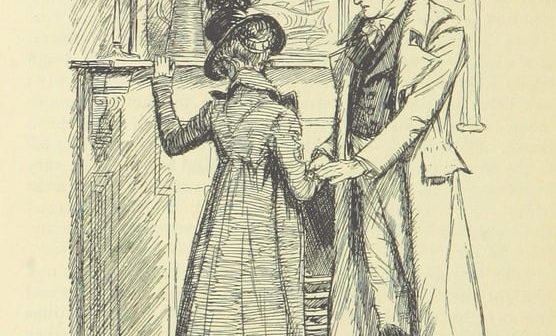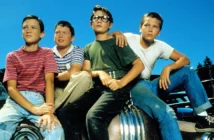People shape culture and culture shapes people. Hardly an original declaration but it merits stating, particularly when looking at women in and behind the media around us. Portrayals in art, literature, television, and games often fall into character archetypes. This is not a bad thing per say; nor is it exclusive to representations of women.
Although it may seem as though there is an endless supply, media is limited. It can, of course, vary depending on what type of culture is utilized but the figures featured in the paintings, episodes, chapters and levels are experienced for a short and fragmented period of time. This is where ‘stock characters’ come into play. The audience is assumed to be familiar enough with the type of person that character is and can therefore fill in any blanks or build a connection – or dissonance – with them quickly. Stock characters are far from a recent invention as many have their basis in ancient myths and sacred texts, however, it is interesting to see the different ways in which the archetypes have been used. While there are plenty of persistent male characterizations, notably the hero, bad-boy, Casanova, and everyman, the use of stock character-types for female characters has a far greater link to continued stereotypes and limited representation in-depth.
Girl Next Door
The ‘Girl Next Door’ is the down-to-earth approachable character designed to embody a wholesome femininity. Often portrayed as the leading male’s love interest, she is cute rather than confidently sexy or promiscuous and, as the name would imply, commonly knows the protagonist by virtue of having grown up in the house next door to them. Sometimes this is incorporated into the additional archetype of the ‘best friend’ character although the lead will usually already have a primary male best friend leading the girl next door to occupy the position of love interest above all else.
There are several cases of this trope across TV, literature and other media with notable examples including Topanga Lawrence from Boy Meets World and Donna Pinciotti from That 70s Show. How I Met Your Mother introduced the one-off character of Maggie Wilks as Ted’s ‘ultimate girl next door’ who ultimately ends up with her own childhood sweetheart at the end of the episode after being the subject of infatuation throughout the plot. This season 5 episode, titled ‘The Window’, highlights that the girl next door is a supporting role rather than the main protagonist. There are, of course, exceptions to every rule, however the use of this character type can create issues when it comes to representations of women as three-dimensional people in their own right if not careful.
Queen Bee
Not so much the love interest but the love rival, the Queen Bee is usually placed within the narrative to provide a contrast to the female protagonist. Where the main character is humble, kind, academic and unpopular, the Queen Bee is arrogant, a bully, athletic, popular and rich. A further contrast is that the Queen Bee is usually blonde while the protagonist is a brunette – no doubt an article for another day – and she is exhibits sexuality far more freely than our leading lady. This character type is most commonly found within high-school dramas where she either creates the problems faced by the lead or exploits existing tensions. Sometimes the smarter manipulative type and other times an outwardly rude dumb blonde, If contained within one book or movie, the Queen Bee is usually overthrown or redeemed however in teen dramas she is most likely written out.
Where the girl next door is primarily a good-natured character, the Queen Bee can vary from hero, villain or anti-hero depending on the narrative. In Jane Austen‘s Emma (1805), and in turn 1995’s Clueless, the titular protagonist is a redeemed Queen Bee as she is ultimately well-meaning and rebuilds her relationships with others by the plot’s end. High School Musical‘s Sharpay Evans and Mean Girls‘ Regina George are further examples of this trope in use and both are redeemed in the end. Notably, Mean Girls was adapted from the book Queen Bees and Wannabes by Rosalind Wiseman, thus the archetypal characters were something screenwriter Tina Fey was deliberately playing with. Avril Lavigne and Taylor Swift utilized both the girl next door and Queen Bee types in their ‘Girlfriend’ and ‘You Belong With Me’ music videos with Lavigne subverting and poking fun at the narrative while Swift played it straight. In the videos both singers played dual roles.
The use of the Queen Bee type depends on the prominence of the character if she is not a direct opponent to the protagonist, she either is not present in the narrative or has a considerably reduced role. She is usually present to compete with the lead over something, typically a male love-interest, thus can fall into lazy stereotypes if not written with thought.
Old Maid/Maiden Aunt
Compared to the Girl Next Door and Queen Bee types, this characterization is outdated in a way in which the other two are not as, in the past 250 years, the status and position of women has changed considerably, particularly in relation to age and marriage. That is, however, exactly why I wished to discuss it. This type of character is most famously found within the works of Jane Austen. In contrast to that of the other tropes, becoming an old maid was a dreaded and very real existence. The meme going around, quoting from the 2005 adaptation of Pride and Prejudice, in which Charlotte Lucas explains her reasons for marrying (essentially to save herself from the fate of becoming an old maid) epitomizes the societal change. “I’m twenty-seven years old, I’ve no money and no prospects. I’m already a burden to my parents and I’m frightened”. The quote, from 2005 and not 1813, is funnier still because of the contrast as that is the state in which many twenty-somethings are in, both male and female, although we have far more agency than Charlotte Lucas. Charlotte herself is a contrast to Elizabeth and Jane Bennett who both are able to marry for love and are a few years younger. Ultimately, there are no old maids in Pride and Prejudice.
An old maid is often a maiden aunt. A ‘maid’ or ‘maiden’ in this sense is a somewhat archaic term and simply means unmarried girl or woman. The definition of ‘old’ has certainly changed since Austen’s time and when researching the threshold was vague ranging from 25 to 40. This brought my mind to the ‘And I’m going to be forty!’ scene from When Harry Met Sally in which the reasoning for this figure was correctly raised. Sally worries that she’ll end up a childless old maid. With marriage and childbirth being the primary reason for one another, there was a biological reason for the ‘suitable marriage age’ and if that exists, then there will be those past it who never married. The best Austen example here is Miss Bates from Emma; a character of ridicule and pity. Interestingly without a counterpart in 1995’s Clueless, Miss Bates looks after her ageing mother and niece Miss Jane Fairfax. It is key to remember here that Jane Austen was herself a maiden aunt, passing away aged 41.
Imperial and World Wars took the lives of millions of young men, thus leaving the potential for single women who may have married in a previous generation. In Downton Abbey, set in 1920, Lady Edith Crawley states ‘almost every young man we grew up with is dead’ and is the closest to fulfilling the archetype although while unmarried is the female character with the most professional success. Notably, Downton Abbey is a period drama and media such as Bridget Jones’s Diary and Fleabag have deconstructed this characterization for the modern age. Nonetheless, ‘spinster’ characters are often coupled up by the end of modern-day narratives. Is it really a label the modern age has outgrown or do old habits die hard?
And Yet There Are More…
There are several other female archetypes throughout TV, literature, art and other media including the femme fatale, tart with a heart, ugly duckling, the mother, and the shrew. Spotting them can be interesting especially when considering the age and authorship as well as whether the tropes overlap and contrast. They can be fundamental to characterizations however, content creators can help to re-enforce harmful stereotypes.




